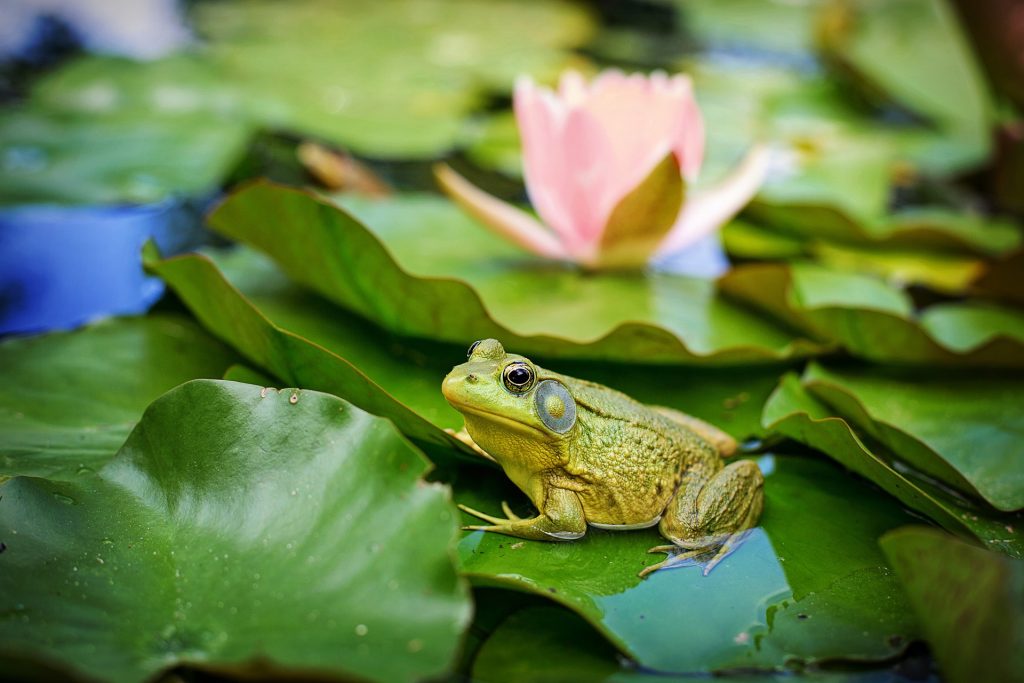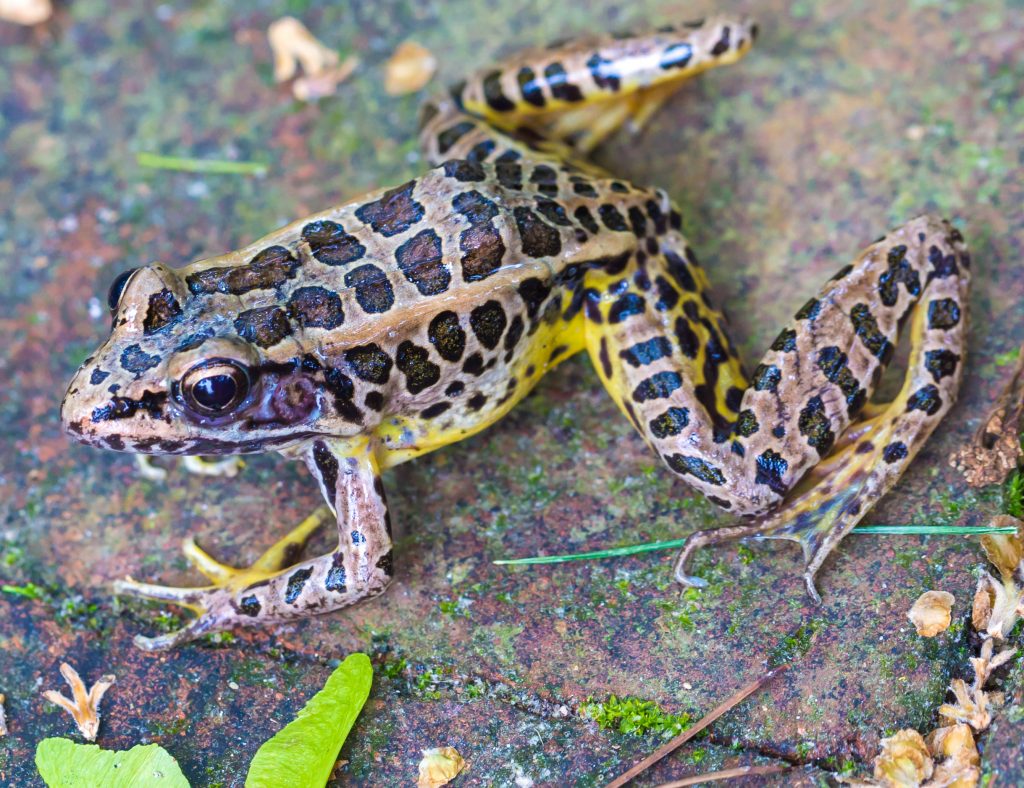Gardening Trends: Ecosystem Health
The new year’s forecast for gardening and horticulture reveals little that’s new. Trend spotters expect more of the same … but intensified. With a 20/20 view of the past, 2020 is expected to focus once again on environmental stewardship and sustainability.
“If we can combine the wisdom of the past with the science and technology of today, our future could be very bright,” suggested the “Garden Trends Report for 2020” by Garden Media Group.
“Could” is the key word, because more than ever, the health of the natural world relies on man.
The annual report shared the following 2020 predictions, as well as tips for supporting ecosystem health.

Are the sounds of nature silent? A frog in your garden is a sign of a healthy ecosystem. Image courtesy of Garden Media Group
Green-collar jobs: Job openings in the horticulture industry outnumber graduates 2 to 1, but many don’t recognize the options. Watch for public education about careers in this up-and-coming employment sector, from horticulture therapist and professional recycler to hydroponic caretaker and nature blogger. Even plant whisperers—those claiming an innate ability to connect with plants—may find viable employment in the year to come.
Circular economy: Global consumption more than tripled since 1970, so expect to hear more about a circular economy. This theory promotes product reuse and waste reduction, or simply, doing more with less. Consider it man’s attempt to imitate nature’s recycling processes. Garden Media Group explained that a circular economy harkens to “the days when things were made to last, items were mended, and fashions lasted longer than a season.”
City greening: Technology’s 24/7 connections make man yearn for the natural world. However, more than half the world lives in cities, and the number is expected to increase to 70 percent by 2050. This is why city planners advocate for planting more trees and increasing green infrastructures for the nurturing of residents’ mind, body and spirit. Greenscapes, such as urban parks and central recreational districts, provide short-term escapes from inner-city hustle and bustle. They also do double duty by helping to mitigate urban heat, control stormwater runoff and reduce air pollution.
Save the soil: “We treat our soil like dirt,” said representatives of Garden Media Group. The top six inches of soil is fundamental for growing food and saving habitats, yet this precious resource has been stripped and nutrients removed through continued deforestation and related erosion. The Food & Agricultural Organization of the United Nations predicted that soil as we knew it—organically rich with vitamins and minerals—could be gone by 2050. Naturalists and scientists are expected to advocate with louder voices for soil restoration versus extraction. Home gardeners and farmers will be urged to grow green manures and seed fields with cover crops, such as beans, clover and lentils. Organic compost and untilled fields can help rebuild the soil, too.
Mushroom magic: A superfood with superpower, edible mushrooms provide more than 100 beneficial effects on the body, including prevention and treatment of some 200 conditions, reported the “Garden Trends Report for 2020.” The fungi also create rich soil by breaking down organic matter.
“Mushrooms are not just good for us, they’re also good for the planet,” said the Garden Media Group. That’s why scientists are experimenting with mushrooms that fight viruses, clean up oil spills and absorb pollution. Watch for updates about Pestalotiopsis microspora, a rare mushroom found in the Amazon. This mushroom species can help with another man-made dilemma: the decomposition of plastic!
Friend or Frog
Sounds of nature: Stop and listen, especially at night. Are there sounds of nature, as in years gone by?

A spotted frog. “Silence in nature is not a good sign,” reported Garden Media Group. A quiet world suggests that amphibians, like frogs and toads, are disappearing.. It’s not uncommon to find frogs and toads at Lewis Ginter Botanical Garden in our diverse ecosystem or even the Conservatory! Image by Tom Hennessy
“Silence in nature is not a good sign,” reported Garden Media Group. A quiet world suggests that amphibians, like frogs and toads, are disappearing. The International Union for Conservation of Nature reports that one in three amphibians is endangered, and again man is the primary cause. A frog in your garden is a sign of a healthy ecosystem. The year 2020 will encourage the saving of amphibians by reducing the destruction of their habitats, planting native versus non-native plants and reducing the use of pollution and pesticides. Homeowners can help reverse the trend by creating frog-friendly backyards. Amphibians like a frog welcome still-water features, native groundcovers and marginal plants. Toad houses also provide suitable habitats, plus garden interest.
A version of this article first appeared in the Richmond Times-Dispatch.